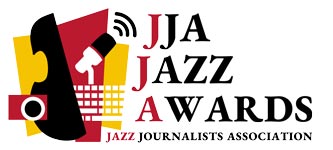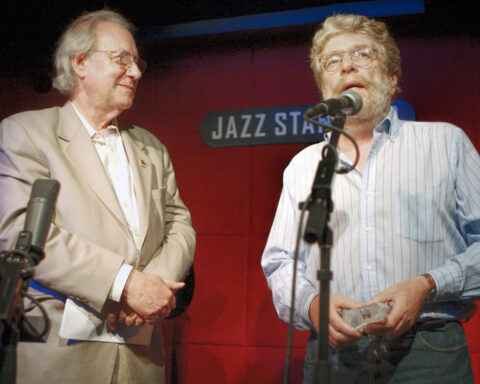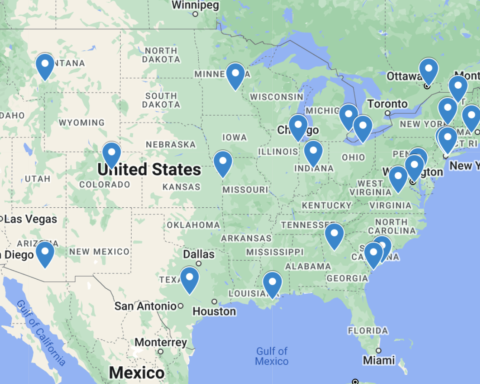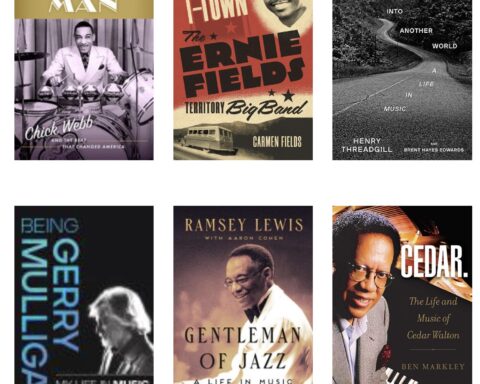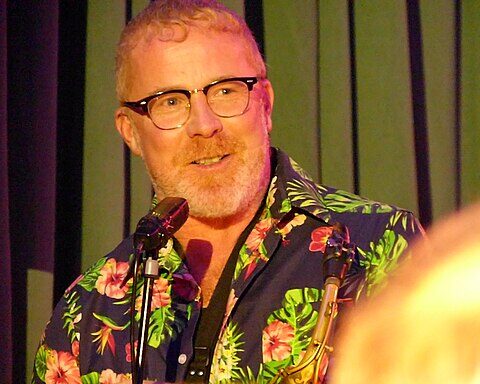Los Angeles-based writer and director of communications at the UCLA School of Education
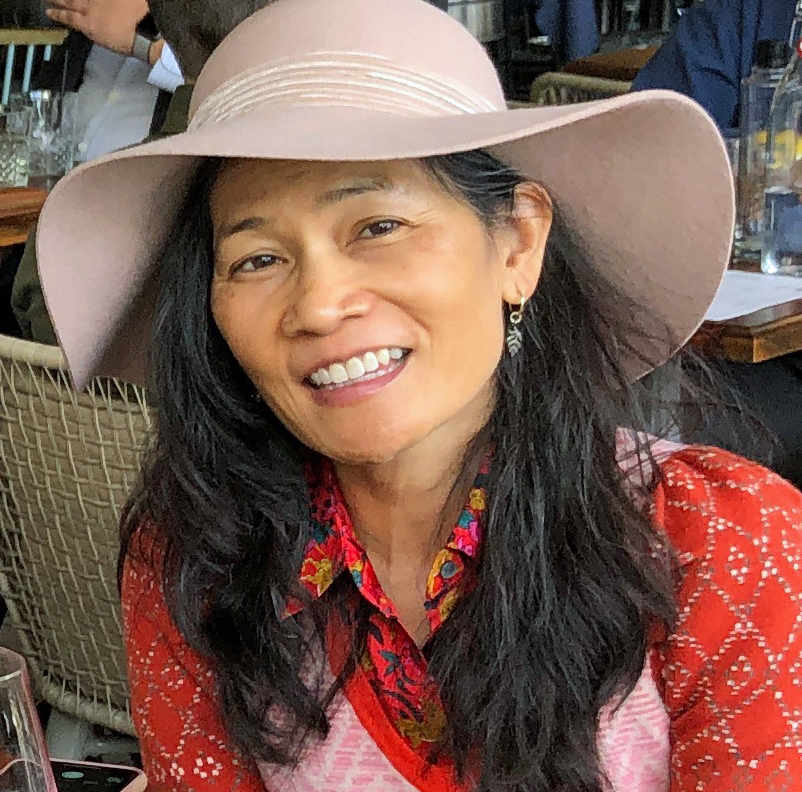
photo © Carol Betti
and Information Studies, Joanie Harmon is the author of the food blog Girl Meets Soup and the jazz blog Making Life Swing, recognized by the LA Press Club as the Best Individual Independent Blog in 2018 and 2021. She joined the JJA in June 2021.
The idea for “Making Life Swing” came to me while binge-watching episodes of “Lou Grant.” I realized that the credit, “Music composed and conducted by Patrick Williams” referred to the same Patrick Williams who I had seen conducting a band at one of the Los Angeles Jazz Institute’s biannual festivals that year.
Upon looking at Mr. Williams’ website, I learned that he had not only provided theme music and scoring to “The Mary Tyler Moore Show” spinoff, but created the musical settings for many of my favorite TV shows. His credits included “MTM,” “Columbo,” “The Bob Newhart Show,” and “The Streets of San Francisco,” as well as numerous film scores and iconic albums, including Frank Sinatra’s Duets and Duets II, and Billy Joel’s “The Stranger.
I’m not part of the usual demographic that writes about jazz, being neither male nor a musician. But as a lifelong lover of all kinds of music, I was girded with years of reading liner notes and my ever-growing library of CDs and books. Most of all, I had my skills as a writer and reporter, and knew how to hunt down a story and present it.
Armed with an overall disbelief that anyone would refuse me, I managed to obtain an interview with Mr. Williams (who died in 2018) and eventually a number of other notable musicians, arrangers and composers, many of whom live in the Los Angeles area.

photo from Doug Ramsey’s ArtsJournal.com/Rifftide
To gain access to these individuals – some of whom are firmly ensconced in jazz history, and others on their way — I owe a great deal to Ken Poston, now station manager of San Diego’s KSDS-FM, and the founder of the LAJI (Ken was also celebrated by the JJA as a member of the JJA’s “A-Team” in 2006). Until the pandemic, his twice-yearly festivals in the Los Angeles area were centered on and featured musicians, composers, and arrangers from the mid-late 20th Century, which I consider the golden age of TV music.
Attending the LAJI festivals meant seeing legends like Gene Cipriano, Terry Gibbs and Chuck Berghofer, onstage as well as speaking on panels and chatting with fans. The events also featured today’s talented workforce of studio musicians, composers and arrangers, with appearances by Andy Martin, Grant Geissman, Peter Erskine and Gordon Goodwin. I also contacted several musicians through a couple of now-defunct Yahoo message boards, Kentonia and West Coast Jazz.

KSDS-FM San Diego
While there have been some wonderful books – Scott Yanow’s encyclopedic Jazz on Film: The Complete Story of the Musicians and Music Onscreen and the recent Play the Way You Feel: The Essential Guide to Jazz Stories on Film by Kevin Whitehead, there has never been a comprehensive work on the jazz idiom within television. I created “Making Life Swing” as a sort of sketchpad for a book that I hope to publish. Although it only has 19 posts so far, I think it makes up for quantity with the quality of my interview subjects.
As viewers, most of us tend to take music on television for granted, although it’s an integral part of the experience. Music in television, as in film, sways our emotions, evokes the characters’ feelings and actions. In that, I feel that it is a relatable topic, as are the stories behind the commitment of these musicians, arrangers and composers to their craft.
Incidentally, I adapted the title “Making Life Swing” from Ralph Ellison’s 1970 essay “What America Would Be Like Without Blacks” (before writing Invisible Man, Ellison majored in music at Tuskegee Institute, and some essays in his collection Shadow and Act concern jazz). In the essay, he posited that:

The Huntington
…had there been no blacks, certain creative tensions arising from the cross-purposes of whites and blacks would also not have existed. Not only would there have been no Faulkner; there would have been no Stephen Crane, who found certain basic themes of his writing in the Civil War … Without the presence of Negro American style, our jokes, tall tales, even our sports would be lacking in the sudden turns, shocks and swift changes of pace (all jazz-shaped) that serve to remind us that the world is ever unexplored, and that while a complete mastery of life is mere illusion, the real secret of the game is to make life swing.
On the surface, this may seem to have nothing to do with television. But wait for it.
Jazz is one of the few arenas where people of all races have the chance to equally participate with their gifts and talents. That’s not to say that the history of jazz and race has been peaceful and perfect, especially in the United States where it was born.
But we’ve come a long way from “The Nat King Cole Show” being cancelled because advertisers did not want their products to be associated with a Black entertainer to Jon Batiste ruling the bandstand on “The Late Show with Stephen Colbert.” There is still work to be done to achieve a universal ethos of racial equality, and much can be learned from the story of jazz.
Although I am a true novice at writing about music, I’ve found that one of the great things about jazz musicians is that they’re always excited to teach, whether other musicians trying to play better or a person who’s not an instrumentalists, but is interested in their stories. And, at the heart of jazz is improvisation, where practitioners’ skills lend themselves greatly to the creation of theme songs and scores as an integral part of the work of establishing a tiny universe (as in film and television shows) to tell a story, each with its own unique characters, setting and period – indeed, the work of making life swing.

